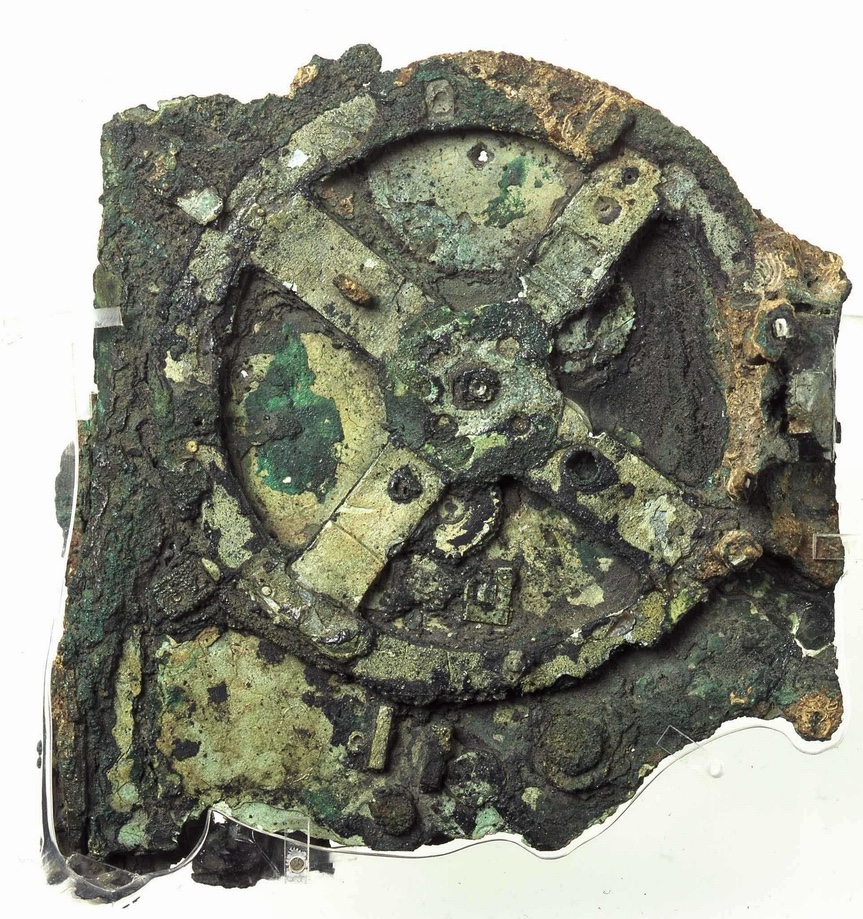The first GRPS (Global Positioning System) built in history, the Antikythira Mechanism is one of the most fascinating and important archaeological finds. It dates back to around 87 BC. and is considered the first known mechanical computer. The elaborate mechanism could determine the longitude of each region and serve to create reliable maps, from the 2nd c. e.g. This finding, made by the scientists of the Astrophysics Laboratory of the University of Athens, practically means that GPS existed since the 2nd century BC!
The Antikythira Mechanism is made of copper, with 30 cogwheels and complex mechanical arrangements. It functioned as an astronomical computer, predicting the positions of the Sun, the Moon, the planets and the performance of sports games and festivals.
It incorporated innovative technologies advanced at the time, such as the differential mechanism, to depict the non-uniform motion of the Moon.
Today all studies and results from research laboratories and scholars prove the advanced know-how and scientific thinking of the ancient Greeks. It changed the perception of the history of technology, raising new questions about the development of science. It is a masterpiece of engineering and art, testifying to the intelligence and skill of its builders.
X-rays, 3D renderings and digital analyzes have revealed unknown details of the mechanism’s operation. International research teams continue to study the find, revealing new facts about its construction, capabilities and historical significance.
The Antikythera Mechanism has inspired many scientists, engineers and artists. It has been the subject of numerous reports, documentaries and books. It symbolizes the inexhaustible human curiosity and the constant struggle for knowledge and progress.
This post is also available in:
![]() Ελληνικα (Greek)
Ελληνικα (Greek)











